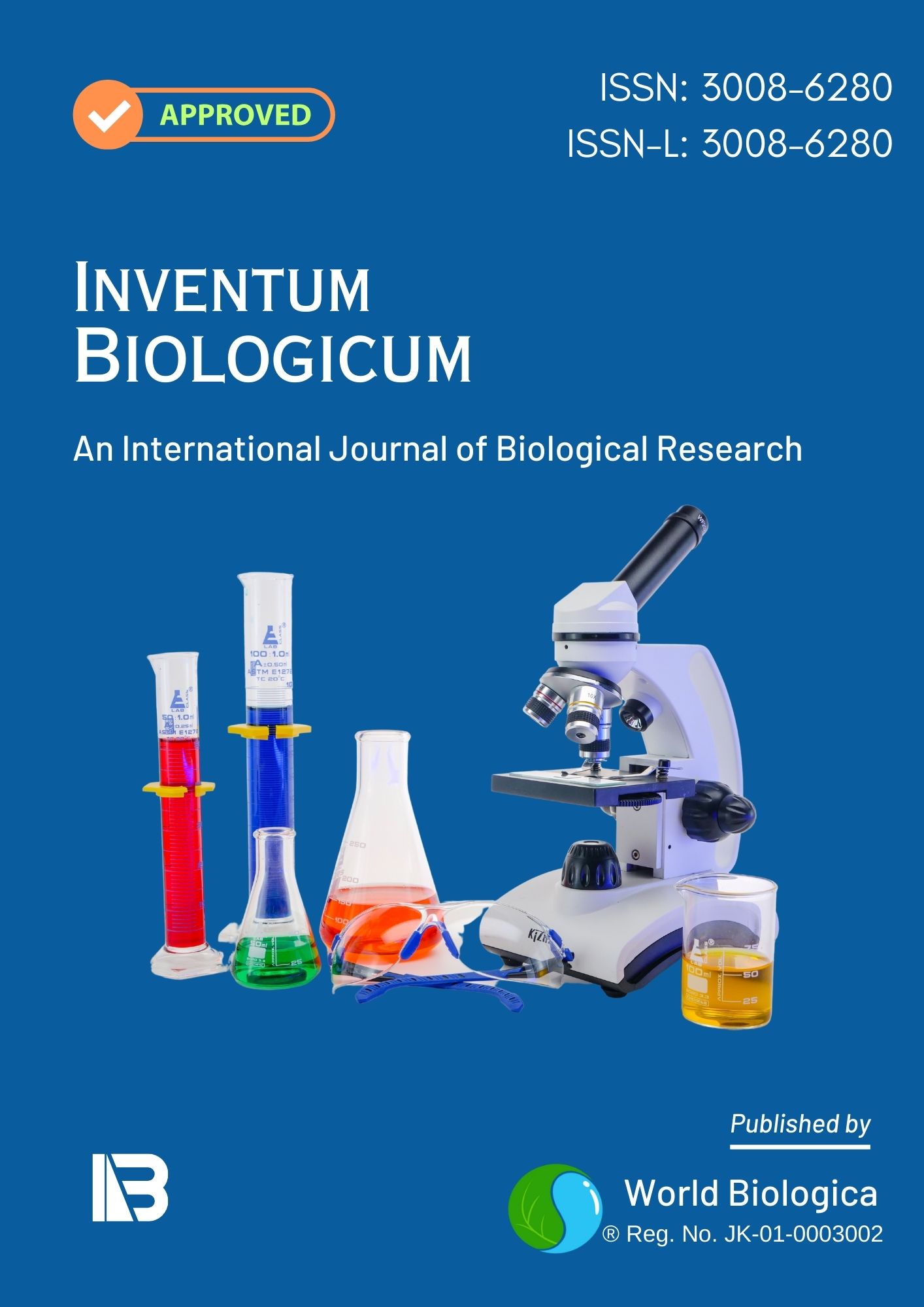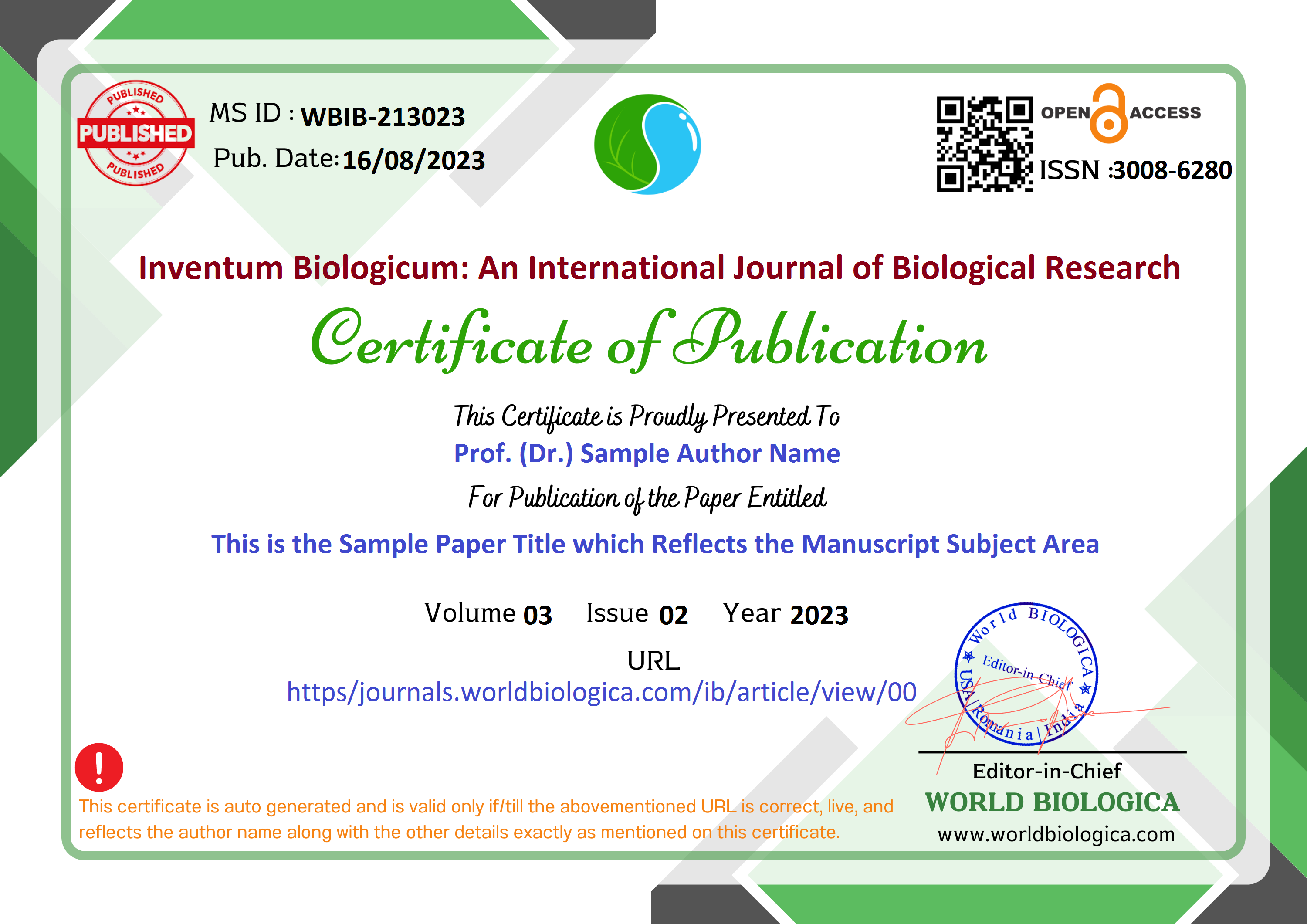Assessment of Tree Diversity and Recruitment Patterns in the Kanha Tiger Reserve, Central India
Keywords:
Tree Diversity, Regeneration, Kanha Tiger Reserve, Biodiversity, Conservation, Ecosystem resilience, Species richnessAbstract
Tree diversity and regeneration are vital indicators of forest health and resilience, particularly in biodiversity-rich areas like the Kanha Tiger Reserve in central India. This study assesses the diversity and recruitment patterns of tree populations across five distinct locations within the reserve: Chapari, Kisi, Manegaon, Patpara, and Soutiya. A total of 25 circular plots, each with a 10-meter radius, were systematically established to identify and measure all trees with a girth at breast height (GBH) greater than 30 cm. Additionally, a nested subplot approach was utilized to evaluate tree recruits with a GBH of 20 cm but less than 50 cm in height. Various diversity indices, including Taxa (S), Dominance (D), Simpson's Index (1-D), Shannon Index (H), and Evenness (e^H/S), were calculated to gauge species richness and distribution patterns.
The results demonstrate considerable spatial variation, with Chapari and Soutiya showing the highest species diversity and recruitment rates, while Kisi and Patpara exhibited lower diversity and higher dominance, possibly due to environmental or anthropogenic influences. A Kruskal-Wallis test identified significant differences among the locations for most of the ecological indices, and further Dunn's post-hoc tests highlighted specific pairwise differences between the locations. The findings of this study emphasize the need for targeted conservation strategies to enhance biodiversity and maintain ecological equilibrium within the Kanha Tiger Reserve.
Downloads
References
Anderson, K., Ryan, B., Sonntag, W., Kavvada, A., & Friedl, L. (2017). Earth observation in service of the 2030 agenda for Sustainable Development. Geo-spatial Information Science 20 (2), 77-96.
Cavender-Bares, J., Gamon, J. A., Hobbie, S. E., Madritch, M. D., Meireles, J. E., Schweiger, A. K. & Townsend, P. A. (2022). Integrating remote sensing with ecology and evolution to advance biodiversity conservation. Nature Ecology & Evolution 6 (5), 506-519.
Clark, D. A., & Clark, D. B. (2000). Landscape-scale variation in forest structure and biomass in a tropical rain forest. Forest Ecology and Management 137(1-3), 185-198.
Condit, R. (1998). Tropical Forest Census Plots: Methods and Results from Barro Colorado Island, Panama and a Comparison with Other Plots. Springer-Verlag.
Cristescu, M. E., & Hebert, P. D. N. (2019). Can environmental RNA revolutionize biodiversity science? Trends in Ecology & Evolution 34 (8), 694-697.
Devi, R., Bhowmick, P. K., & Chhetri, P. (2018). Vulnerability of forest fringe tribal communities: A case study of the Baiga tribe in central India. Journal of Environmental Management, 223, 70-80. https://doi.org/10.1016/j.jenvman.2018.06.049
Funk, J. L., Cleland, E. E., Suding, K. N., & Zavaleta, E. S. (2024). Advancing biodiversity conservation through innovative monitoring techniques. Global Ecology and Biogeography 33(2), 235-249.
Jetz, W., McPherson, J. M., & Guralnick, R. P. (2019). Essential biodiversity variables for mapping and monitoring species populations. Nature Ecology & Evolution 3 (4), 539-551.
Joshi, V., Gupta, S., & Sinha, R. (2019). Spatial heterogeneity in species diversity in forest ecosystems. Forest Ecology and Management 437, 135-144.
Kumar, A., & Mishra, S. (2021). Ecological stability and species abundance in forest ecosystems. Journal of Tropical Ecology 37(2), 112-120.
Mueller-Dombois, D., & Ellenberg, H. (1974). Aims and Methods of Vegetation Ecology. Wiley.
Orme, C. D. L., Moritz, C., Ferrier, S., Huettman, F., & Peterson, A. T. (2024). Integrating eDNA and remote sensing for comprehensive biodiversity assessment. Conservation Biology 38 (1), 89-103.
Patil, R., Deshmukh, A., & Rao, K. (2018). Species diversity and its spatial patterns in tropical forests. Biodiversity and Conservation 27(7), 1987-2002.
Pettorelli, N., Safi, K., & Turner, W. (2016). Framing the concept of satellite remote sensing essential biodiversity variables: Challenges and future directions. Remote Sensing in Ecology and Conservation 2 (3), 122-131.
Reddy, C. S., Kumar, R., Jha, C. S., & Diwakar, P. G. (2021). Remote sensing of biodiversity: What to measure and monitor from space to species? Biodiversity and Conservation 30 (10), 2617-2631.
Sharma, P., Singh, R., & Kaur, J. (2020). Human disturbance and habitat quality: Impacts on species diversity in protected areas. Conservation Biology 34(3), 682-691.
Skidmore, A. K., Pettorelli, N., Coops, N. C., Geller, G. N., Hansen, M., Lucas, R., & Turner, W. (2021). Priority list of biodiversity metrics to observe from space. Nature Ecology & Evolution 5 (7), 896-906.
Downloads
-
Download PDF
 Abstract Views: 92,
Abstract Views: 92,  Download PDF: 86
Download PDF: 86
Published
How to Cite
Issue
Section
License
Copyright (c) 2024 Inventum Biologicum: An International Journal of Biological Research

This work is licensed under a Creative Commons Attribution-NonCommercial-NoDerivatives 4.0 International License.


















